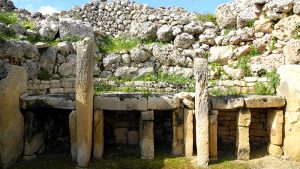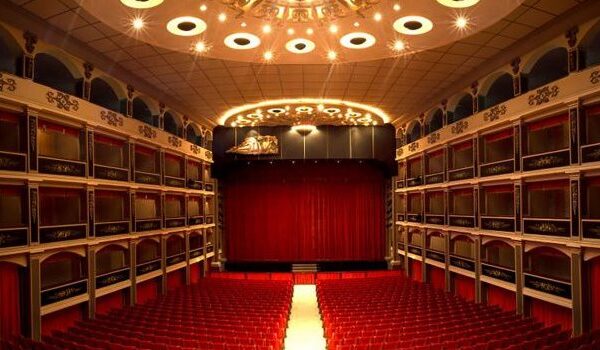
The Ggantija Temples are located in the small village of Xaghra, about 2 miles (3.2 km) northeast of Victoria. The temples comprise one of the most significant archaeological sites in Malta and also in the Mediterranean. They also predate Stonehenge and the Great Pyramids of Giza, and both have been deemed a UNESCO World Heritage Site. The temple ruins are part of a megalithic complex dating back to the Ggantija Phase (3600-3200 BC).
The society responsible for the construction of both temples is often referred to as the ‘temple builders.’ Little is known about these people, other than they most likely came from modern-day Sicily and lived peacefully as hunter-gatherers. Another puzzling fact is that their society somehow disappeared. That is, historians cannot figure out how they vanished from the Maltese islands entirely.
The name Ggantija stems from the Maltese word for giant. Ancient legends about a race of giants that lived in Gozo were a way of explaining the presence of the temples. Together, both temples cover a total are of 10,000 square feet (3,048 square meters). They share a boundary wall and each is constructed out of massive limestone slabs, with some weighing more than 50 tons!
Excavations have produced clues about these colossal temples. Ritual rooms, curved walls, spiral-shape carvings, niches with altars, libation holes and animal bones provide us only with educated guesses about the original purpose of the temples. They were most likely used in the worship of a fertility goddess or Earth Mother, but beyond that there is not much to assume. It is likely that religious ceremonies would take place within the structure while a congregation of people stood outside in the large, raised forecourt in front of the temples. The altars in the larger of the two temples have become an iconic image for Gozo, and can be found on postcards throughout the island. Each altar is constructed out of vertical stone slabs. Also in the larger temple, is a stone hearth that suggests fire was an important component of temple rituals.
The reality about the Ggantija Temples is that nobody alive can know the complete truth about them. They remain a compelling testament to early human civilization and will continue to evoke a sense of mystery in all who visit them.




